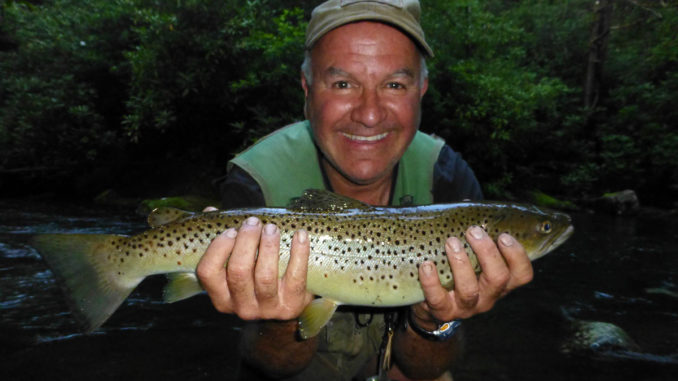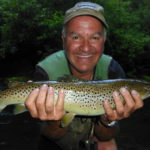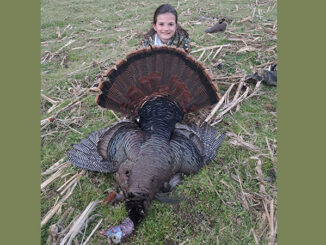
North Carolina offers mountain streams aplenty
It is possible to fish a different trout stream every day for a year and cover only a fraction of the streams in western North Carolina. Trout country runs from Surry County in the northwest to Cherokee County in the far west and includes three distinct fisheries: streams regulated by the North Carolina Wildlife Resources Commission, streams regulated by the U.S. Park Service and streams regulated by the eastern band of Cherokee Indians.
Each fishery has its own regulations for license requirements, creel limits and types of fishing.
The Commission regulates streams in the Pisgah and Nantahala national forests, in state parks and on some private lands. Creel limits and license requirements vary according to the type of waters.
Of the 4,000 miles of North Carolina streams capable of supporting trout, the Commission manages 2,000 miles as public mountain-trout waters. Half of these streams have self-supporting populations of trout and are designated as wild-trout waters. The other 1,000 miles of streams are hatchery supported and are stocked annually with approximately 900,000 rainbow, brook and brown trout.
Streams are managed to accommodate almost every style of fishing, from natural bait to fly fishing. A comprehensive fishing license gives fishers access to all public mountain-trout waters. Only a state license is required for fishing undesignated waters. Regulations are the same as for hatchery-supported waters — seven trout per day with no size limits or bait or lure restrictions. A state license and special trout permit are required to fish hatchery-supported streams outside national forests. Creel limits are four trout per day for wild-trout waters; the size limit is 7 inches. Only artificial flies or lures are permitted on wild-trout waters.
Streams in the Great Smoky Mountains National Park and on the Blue Ridge Parkway are managed by the U.S. Park Service. Only a state license is required. Creel limits are five fish per day with a 7-inch size limit. Fishing is restricted to artificial flies or lures.
Of the 2,900 miles of streams in the park, 1,073 miles are capable of supporting trout, according to park officials. A recent comprehensive survey added 900 miles to the park’s initial estimate of 2,000 miles of streams, but most of these streams are above 4,000 feet and are too small to support trout.
With the exception of a few streams on the Blue Ridge Parkway, streams within park boundaries are not stocked. The Commission does stock six streams and one lake on the parkway. Park regulations apply to wild-trout waters as well as hatchery-supported waters.
The Cherokee Indian reservation has 30-plus miles of trout streams listed as enterprise waters. These waters include sections of the Oconaluftee River, Soco Creek, Raven Fork and Bunches Creek, plus a series of small ponds. Streams are generously stocked with approximately 350,000 fish each year; the creel limit is 10 fish per day, the highest creel limit in the mountains. The tribe does not recognize state fishing licenses; instead, it requires a tribal permit.
With the exception of Soco Creek, which originates in northern Jackson County, all Enterprise streams are formed in the adjoining Great Smoky Mountains National Park. Even with heavy fishing pressure and frequent stockings, the streams have some natural reproduction, plus, a number of wild trout are either washed down or migrate from park streams.
The majority of the trout are raised at the tribal hatchery at the head of Big Cove. Trout are raised from eggs, and the hatchery keeps between 700,000 to 800,000 trout in its raceways, everything from fry to stocking-size trout.
Enterprise Waters are stocked once a week during the winter and three times a week during spring, summer and fall. The tribe also has a trophy-trout section on Raven Fork. A separate permit is required for trophy waters.
Reservation streams, open to year-round fishing since 2011, will be closed for two weeks beginning in March 2016. Before 2011, enterprise waters were closed the last two weeks in March and opened the last Saturday in March, giving area anglers two opening days. Fishing is closed on state hatchery-supported streams during March, opening the first Saturday in April.
The Commission manages mountain streams in three state parks: South Mountain, Gorges and Stone Mountain. Bullhead and Rich Mountain creeks in Stone Mountain State Park are managed separately by N.C. State Parks. The two streams are restricted to catch-and-release, fly-fishing only, with barbless hooks required. Anglers pay a fee to have exclusive access to sections of both streams. The streams are not stocked, but they hold some trophy-size fish due to regular feedings by park officials.
No matter where you go in the western part of the state, quality trout fishing awaits.







Be the first to comment